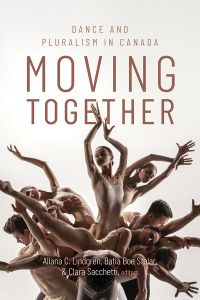Moving Together
Éditeur : Wilfrid Laurier University Press
ISBN numérique PDF: 9781771124850
Parution : 2021
Catégorisation :
Livres numériques /
Autre /
Autre /
Autre.
Formats disponibles
| Format | Qté. disp. | Prix* | Commander |
|---|---|---|---|
| Numérique PDF Protection filigrane*** |
Illimité | Prix : 27,99 $ |
*Les prix sont en dollars canadien. Taxes et frais de livraison en sus.
***Ce produit est protégé en vertu des droits d'auteurs.
Description
Moving Together: Dance and Pluralism in Canada explores how dance intersects with the shifting concerns of pluralism in a variety of racial and ethnic communities across Canada.
Focusing on the twentieth and twenty-first centuries, contributors examine a broad range of dance styles used to promote diversity and intercultural collaborations. Examples include Fijian dance in Vancouver; Japanese dance in Lethbridge; Danish, Chinese, Kathak, and Flamenco dance in Toronto; African and European contemporary dance styles in Montréal; and Ukrainian dance in Cape Breton. Interviews with Indigenous and Middle Eastern dance artists along with an artist statement by a Bharata Natyam and contemporary dance choreographer provide valuable artist perspectives. Contributors offer strategies to decolonize dance education and also challenge longstanding critiques of multiculturalism.
Moving Together demonstrates that dance is at the cutting edge of rethinking the contours of race and ethnicity in Canada and is necessary reading for scholars, students, dance artists and audiences, and everyone interested in thinking about the future of racial and ethnic pluralism in Canada.
Using dance to rethink race and ethnicity in Canada






















